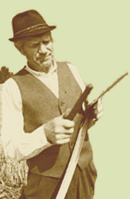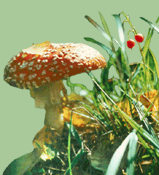Ships on our sea: blessing or misfortune?
Tarmo Soomere looks at the down side of ship traffic: drowned ships, oil-spilled water and all of the pollution ends up on the coasts. Moreover, waves caused by ships destroy coasts and harbours, ship traffic may involve accidents, small- and large-scale oil spills, noise, emission of solid particles and waste waters. The article analizes all these threats, paying particular attention to the movement of water caused by high-speed ships, and the consequences these waves bring to coasts and the people living along them.
Tree of the year: willow-loving insects
Mati Martin takes a look at the colourful world of insects that are directly dependent on willow trees. Many of these insects are responsible for strange-looking formations on willow leaves, bark or branches. The article is supplemented with photographs of these formations as well as with pictures of insects living and feeding on willow trees.
Remnant mires back to real mires
Edgar Karolfeld, based on the experience of Canada, gives advice to peat producers of how to turn an exploited mire back into a real mire comunity. A remnant mire is a mire formed after draining the mire and the removal of peat. The leftover peat is emitted into air as carbon dioxide and methane, the main greenhouse gases. Canada, one of the most mire-rich countries in the world, sets good examples of how to renew an exploited peat field. The main idea lies in providing plant material for the mire, and covering these plants with straws. Drainage ditches have to be closed as well. If these steps are followed, it will take 5-6 years for the mire to look like nothing has happened to it.
Essay: A June meditation by Helje saar
A new cave in Vaabina
Andres Tõnisson and Ain Vellak have studied a natural cave in Vaabina, Võru County. The much-spoken natural object was revealed rather unexpectedly. The cave ceiling gave in this winter, falling down and exposing the largest Devonian sandstone cave system (50 m) in Estonia. The main passage is 30 m long, and the entrance is up to 5 m deep.
Estonian Nature enquires
Duk-Duki Tubuan describes the prize of âCustodian of Estonian Life Sciencesâ and lists the prize winners from 1984â2006.
Hille Lapp writes about the process of compiling conservation management plan for the Lake Võrtsjärv special conservation area.
Märjamaa landscape protection area
Roland Müür calls to visit the rare temporary lakes (järta in local language) near Märjamaa. In summer, the hollows are covered by unique vegetation â karst meadows. There are 3 temporary lakes, one of them located along the Tallinn-Pärnu road.
European rarities in Estonia: Ladyâs Slipper
Tiiu Kull introduces the still mystic, but yet so well-known orchid (Cypripedium calceolus), one of the symbols of Estonian nature protection. The orchid, inhabitant of fertile soils in fresh boreo-nemoral forests or wooded meadows, has interesting reproduction biology, and is a good indicator of state of nature.
Interview: Choose the profession of nature protectionist: a difficult, but interesting job!
Toomas Kukk has interviewed Tiit Randla, the prize winner of the Kumari prize.
Hiking trail: Across the Kakerdaja bog
Ann Marvet takes the reader across a large bog, while discussing the essence and efficiency of such boardwalks. The author underlines the positive impacts of baordwlaks: they provide people a better and more comfortable access to othewise inaccessible bogs; and they keep people on track, helping to protect other parts of the bog, including the habitats of rare animal and plant species. The article also describes the sights along the Kakerdaja bog boardwalk.
An ordinary Moorhen
Sven ZaÄek observed the intimate family life of a reserved bird, the Moorhen. These birds are foremost characterized by their especially hidden lifestyle. They are very careful when taking care of their funny-looking aftergrowth. The series of photograhs illustrate well the busy life of a young Moorhen family.
Kalev Päid, one of the best guides in Estonia
Tiit Petersoo recalls the acknowledged geographer, local researcher and a wonderful guide, who would have turned 70 this June. He was very dedicated to his homeland, trying constantly to improve his knowledge of the country. In addition, he knew a lot about neighbouring countries, always being able to impress and surprise his audience.
Tree of the year: Rasina willow
Aita Neemre introduces the Rasina white willow, Estoniaâs thickest willow tree.
|


![[IN ENGLISH]](images/gb.gif)





